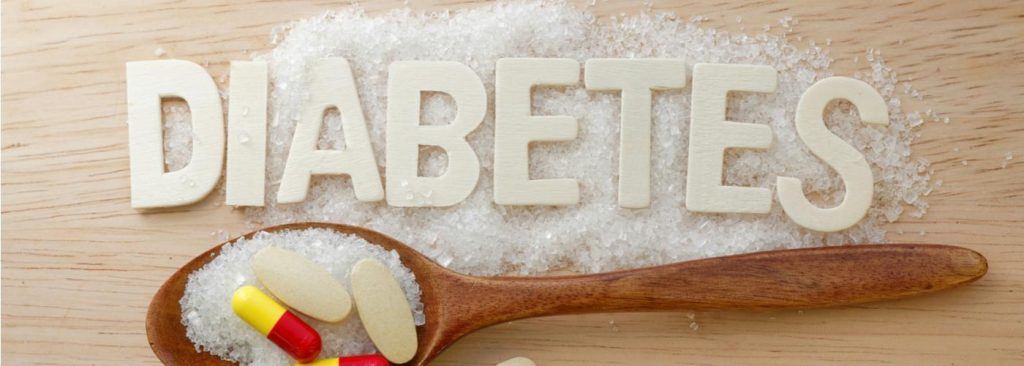Feeling thirsty, hungry, or have slow healing wounds? You may have Type 2 Diabetes. But you are not alone. Type 2 diabetes is an epidemic. According to the CDC, there are more than 30 million diabetics in the US alone, while prediabetes affects more than 80 million people. [1] If you are concerned that you may have Type 2 Diabetes, we encourage you to learn more about the symptoms so you can recognize them in yourself and your loved ones.

Type 2 diabetes is the most common type of diabetes, and it can develop at any age. [2]. However, it is a condition that is most common in people over the age of 40. The worst thing about type 2 diabetes is that people often don’t know they are at risk or that they already have the disease. This, of course, puts them at further risk. Moreover, symptoms of type 2 diabetes can be unclear, mild, and worsen gradually with time. Here are 5 type 2 diabetes symptoms everyone should watch out for.
Constant Thirst
Are you constantly craving water and never feeling fully satisfied by that large glass of water you just chugged? Thirst and an endless desire for water or other hydrating drinks might be a sign that you have type 2 diabetes. These cravings can stem from high blood sugar and increased glucose levels in your blood as a result of diabetes.
Frequent Trips to the Bathroom
If you are peeing at all hours of the day and night, this is a major sign that you should talk to your doctor about getting tested for type 2 diabetes. Healthline [3] explains that frequent trips to the bathroom may indicate high blood sugar levels, as urine flushes excess glucose out of your system that is not being properly processed by the kidneys.
Feeling Hungry All the Time Despite Eating Regularly
Besides the symptoms of thirst and frequent bathroom breaks, people who have type 2 diabetes will also have increased appetite, along with intense food cravings. Excessive hunger is called polyphagia, according to Healthline. [3] It is symptom that you may experience as a result of your body failing to feed its cells with glucose. As a result, you end up trying to eat more to make up for it, leading to a vicious cycle.
Slow Healing Wounds
A person with diabetes may find that any small cuts and scrapes they have on their body are taking an unnaturally long time to heal. Slow-healing wounds like scrapes and cuts might be a symptom of type 2 diabetes. Healthline [3] explains that this happens because high levels of glucose in the blood will cause your blood vessels to contract, slowing down your circulation. As a consequence, the oxygen and nutrients that would normally reach your damaged tissues aren’t getting there as quickly as they should, leaving your body unable to repair itself.
You Feel Itchy or Have Yeast Infections Frequently
A sudden influx of yeast infections is ample cause to consult your doctor. Yeas infections are a very common symptom of type 2 diabetes. According to Medical News Today, [4] the spike in bloodstream glucose levels and increased urination creates the perfect storm for an infection to develop. This also means that any spot that’s moist and warm on your body, including your armpits, mouth, and genital area could start to experience itching if you have type 2 diabetes.
Keep an Eye out for Signs of Type 2 Diabetes
If at any time you are at all concerned that you or a loved one may have Type 2 Diabetes, consult your doctor right away. It is very easy to miss the symptoms of type 2 diabetes or a pre-diabetic state. In both cases, not acting fast enough can always lead to more severe, potentially even fatal, problems down the line.
But don’t stop just at this article. Instead, make sure to educate yourself on all of the possible symptoms of type 2 diabetes, both initial and more severe, so that you can act quickly, or help someone you care about get the treatment they need.
Luckily, it’s quick and easy to do your research online and become knowledgeable about type 2 diabetes. Inform yourself today about the different causes, symptoms, treatments, and lifestyle changes that can help you or your loved ones avoid or confront the condition.
[1]https://www.cdc.gov/chronicdisease/about/costs/index.htm#ref5
[2]https://www.mayoclinic.org/diseases-conditions/diabetes/symptoms-causes/syc-20371444
[3]https://www.medicalnewstoday.com/articles/323185.php
[4]https://www.healthline.com/health/diabetes/early-warning-signs-type-2-diabetes#frequent-urination
